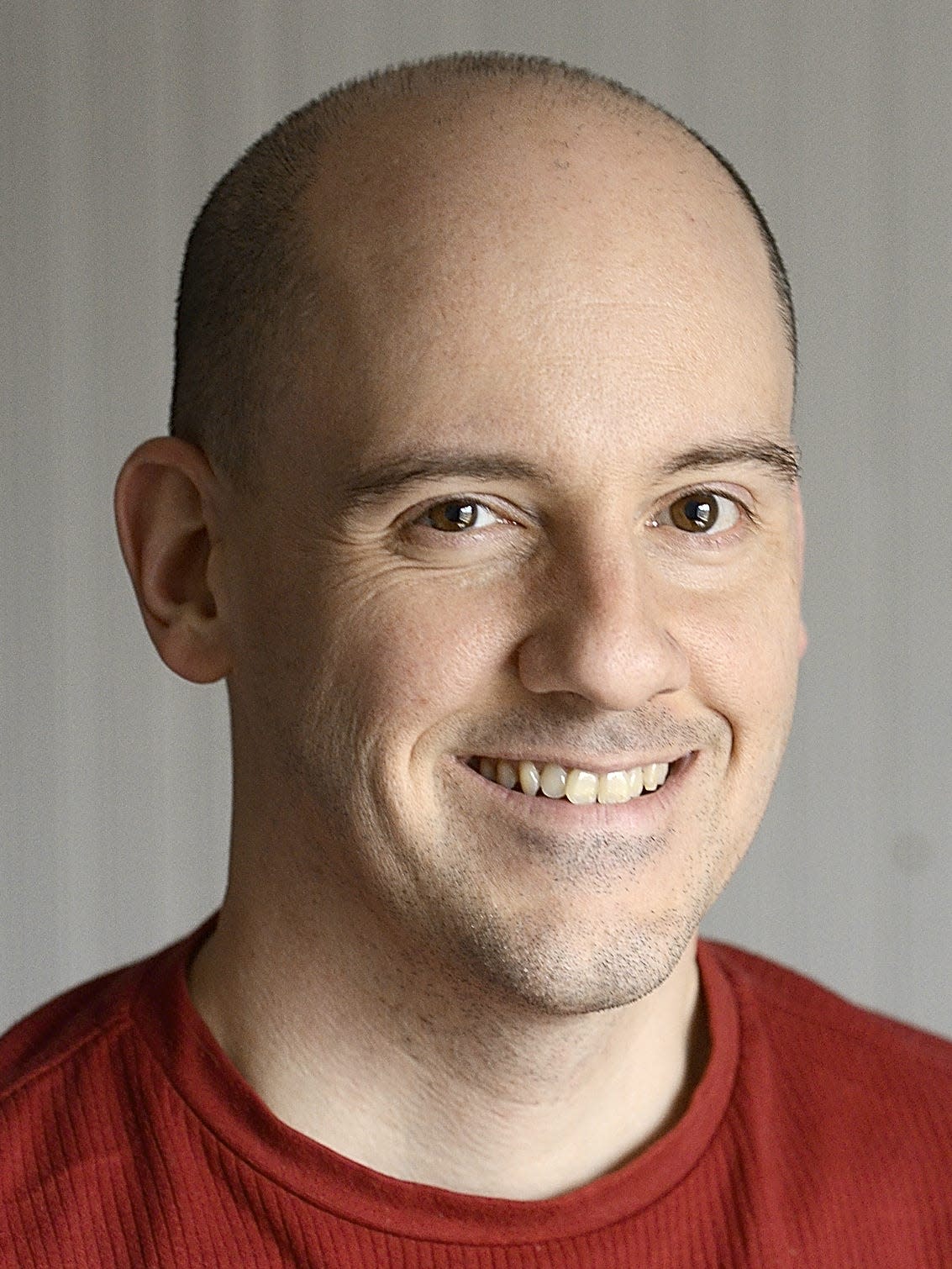Chris Schillig: Collective amnesia is a bad treatment for COVID

- Oops!Something went wrong.Please try again later.
Last week, Ohio reversed an eight-week rise in COVID cases. The state logged 17,530, a decrease of about 2,000 from the previous week.
Some readers may be surprised to learn COVID numbers in the Buckeye State had been growing. The media, like so many other American institutions, has grown weary of the coronavirus. Case numbers, once the lead story and top headline each day, are routinely minimized. The country, it seems, has moved on.
Yet, just because many Americans are finished with COVID doesn’t mean that COVID is finished with us. While Ohio’s numbers are declining (for one week, at least), cases are on the rise in almost half of the states. And the country still loses about 300 people a day to the disease, although that number is far lower than earlier in the pandemic.
In May, the U.S. crossed a somber and gruesome milestone of 1 million deaths attributed to the virus, a threshold the nation almost certainly reached sooner than the official tally, given delays in reporting.
What has changed since the early days of the pandemic is the manufacture and easy availability of vaccines, allowing many Americans to resume pre-pandemic activities, free of masks in all but the most crowded situations, in areas where spread is still high.
And vaccination rates are inching up, too, with 71 percent of all Americans over the age of 5 fully vaccinated.
Many businesses I’ve visited appear to have returned to pre-pandemic customer levels. I’m also gratified to report that I no longer reach reflexively for a mask in my back pocket when I enter a public space. It feels normal again – and good – to be back among people, unmasked.
But still, as individuals and institutions, we need to remain vigilant.
It’s troubling to read that some colleges and universities are making COVID vaccines optional for summer and fall terms. At least three Ohio schools – Bowling Green State University, Ohio University and the University of Cincinnati – have backed off vaccine requirements, according to a Spectrum News 1 report. All three face lawsuits for requiring the vaccines in the first place.
One takeaway from the last two-plus years is how quickly the virus can spread in communal environments like dorms. While the vaccine helps to protect people from the worst of the symptoms, we saw last year that a large number of cases in a small area can lead to infection and re-infection, even among the vaxxed and boosted population.
The existence of such breakthrough cases has proven to be a boon to the anti-vax contingent, which has found this to be fertile soil to sow doubt not only on COVID vaccines, but on all childhood immunizations. These agitators like to repeat the “my body, my choice” rationale from the abortion debate when criticizing vaccine mandates.
Obviously, there are many differences between abortion and coronavirus. The biggest is that pregnancy is not a transmissible disease. Nobody is affected by a woman’s choice except that woman. However, many people are potentially affected by a person’s decision not to be vaccinated, especially if that person works with or lives in close proximity to high-risk populations.
A second troubling trend relating to COVID is the relatively small number of Americans who have received a booster shot. Of the 221.5 million people who are fully vaccinated, less than half have received the booster. These are folks who could be risking unnecessary illness, especially if cases continue to rise where they live.
While the precipitous drop in deaths from coronavirus is a credit to the nation’s vaccination program to date and the hard work of medical professionals, it’s important to remember that death isn’t the only negative outcome. So-called “long COVID” symptoms continue to bedevil a small percentage of survivors.
Americans, it seems, are doomed to forget, and we have a collective amnesia, borne of trauma from the last few years, that prevents many of us from taking commonsense precautions to avoid an ugly fall and winter, corona-wise.
The best safeguard is for those who can – and that’s just about everybody – to get vaccinated and boosted and to continue to exercise discretion in large crowds. Maybe a mask in the back pocket for some occasions is still warranted, and a moment’s hesitation to weigh one’s risks is still a good idea.
Reach Chris at chris.schillig@yahoo.coom. On Twitter: @cschillig.
This article originally appeared on The Alliance Review: Chris Schillig: Collective amnesia is a bad treatment for COVID

